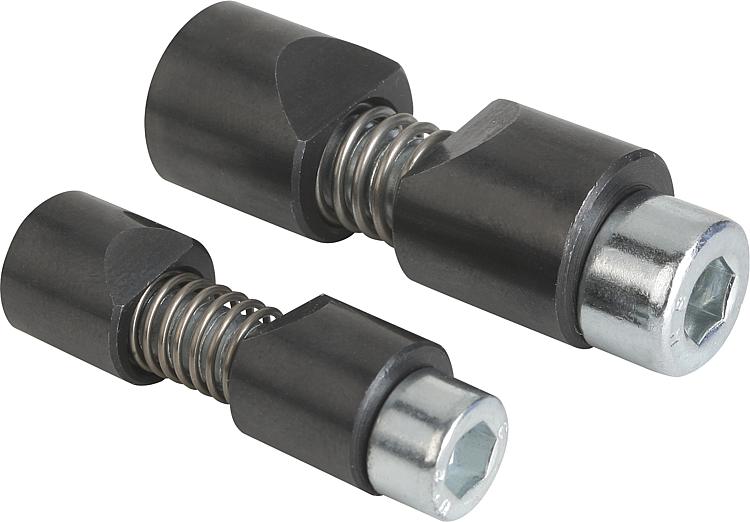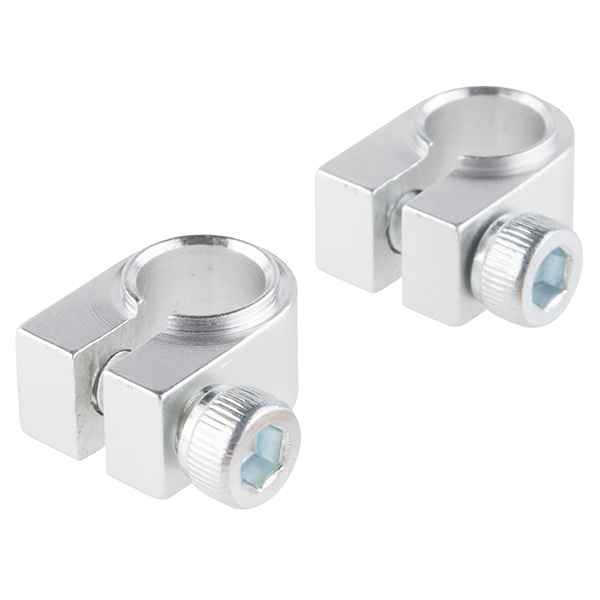
Where can I find information on alternatives to traditional shaft clamps for specific applications?
If you are looking for information on alternatives to traditional shaft clamps for specific applications, here’s a detailed explanation:
When exploring alternatives to traditional shaft clamps, it’s important to consider the specific requirements of your application and the desired performance characteristics. Here are some sources where you can find information on alternative solutions:
1. Manufacturer’s Websites:
Visit the websites of manufacturers that specialize in clamping solutions or components related to your specific application. Many manufacturers provide detailed product information, including alternative clamping solutions that may offer unique features or advantages over traditional shaft clamps. These websites often include specifications, application examples, and technical resources to help you understand the alternatives available.
2. Industry Trade Shows and Exhibitions:
Attending trade shows and exhibitions focused on engineering, machinery, or specific industries can provide opportunities to discover alternative clamping solutions. These events often feature exhibitors showcasing innovative products and technologies. Engaging with manufacturers and industry experts at these events allows you to gather information, ask questions, and explore alternative options specific to your application.
3. Technical Journals and Publications:
Technical journals and publications related to mechanical engineering, manufacturing, or specific industries can be valuable sources of information on alternative clamping solutions. These publications often feature articles, case studies, or research papers that discuss new developments and advancements in clamping technologies. They provide insights into alternative solutions and their applications in various industries.
4. Engineering Consultancies and Experts:
Consulting engineering firms or experts in the field can provide specialized knowledge and recommendations on alternative clamping solutions. These professionals have expertise in various clamping technologies and can assess your specific application requirements to offer tailored suggestions. They can help you evaluate the feasibility, performance, and suitability of alternative solutions.
5. Online Communities and Forums:
Participating in online communities and forums focused on engineering, machinery, or specific industries can be a valuable way to gather information on alternative clamping solutions. These platforms often have discussions, threads, and user experiences shared by professionals and enthusiasts. Engaging in these communities allows you to seek advice, ask questions, and learn from the collective knowledge and experiences of the community members.
When seeking information on alternatives to traditional shaft clamps, it’s important to critically evaluate the sources and consider the credibility and reliability of the information. Every application is unique, and alternative solutions may have specific advantages and limitations. Consulting with experts, conducting thorough research, and considering real-world case studies will help you make informed decisions regarding alternative clamping solutions for your specific application.

Where can I find tutorials on the proper installation of shaft clamps?
If you are looking for tutorials on the proper installation of shaft clamps, there are several online resources where you can find useful information and guidance. Here are some places to look:
- Manufacturer Websites: Many shaft clamp manufacturers provide instructional resources on their websites. Visit the websites of the specific brands you are interested in and look for sections such as “Installation Guides,” “Product Manuals,” or “Technical Resources.” These resources often include step-by-step instructions, diagrams, and even videos demonstrating the proper installation techniques for their shaft clamps.
- Online Video Platforms: Video-sharing platforms like YouTube or Vimeo are rich sources of instructional content. Perform a search using keywords such as “shaft clamp installation tutorial” or “how to install shaft clamps,” and you will likely find videos created by manufacturers, industry experts, or enthusiasts demonstrating the installation process. These videos can provide visual guidance and practical tips for installing shaft clamps correctly.
- Industrial and Mechanical Engineering Websites: Websites and online forums dedicated to industrial or mechanical engineering often have tutorials, guides, or articles that cover various aspects of mechanical assembly, including the installation of shaft clamps. Look for reputable websites, forums, or blogs in these domains and search for relevant articles or tutorials. These resources are typically created by professionals and experts in the field.
- Online Training Courses: Some online platforms offer paid training courses or webinars focused on mechanical assembly techniques. These courses may cover topics like shaft clamp installation as part of a broader curriculum. Look for reputable platforms that specialize in technical training or industrial skills development. These courses can provide in-depth knowledge and practical techniques for proper shaft clamp installation.
- Professional Networks and Associations: Engaging with professional networks and industry associations can also offer opportunities to access installation tutorials. Attend industry events, conferences, or webinars where professionals gather, and take advantage of workshops or sessions that cover mechanical assembly practices. Networking with experienced professionals in your field can also lead to recommendations for specific resources or training materials on shaft clamp installation.
When using these resources, it is important to ensure that the information comes from reputable sources and aligns with industry standards and best practices. Always refer to the specific manufacturer’s instructions and guidelines provided with the shaft clamps you are using, as they may have unique installation requirements or recommendations for their products.
By exploring these different sources, you can find tutorials and instructional materials that will help you understand the proper installation techniques for shaft clamps and ensure their effective use in your mechanical assemblies.

What are the key features to consider when selecting a shaft clamp for a specific application?
When selecting a shaft clamp for a specific application, several key features should be taken into consideration. These features will help ensure that the chosen shaft clamp is suitable for the intended use and provides optimal performance. Here are the key features to consider:
- Shaft Diameter: The shaft clamp must be compatible with the diameter of the shaft it will be installed on. Measure the diameter of the shaft accurately and choose a shaft clamp that matches or has an adjustable range to accommodate the specific shaft size.
- Material: Consider the material of the shaft clamp, as it can impact factors such as strength, corrosion resistance, and temperature tolerance. Common materials for shaft clamps include steel, stainless steel, aluminum, and plastic. Select a material that suits the environmental conditions and requirements of the application.
- Clamping Mechanism: Evaluate the clamping mechanism used in the shaft clamp. Common types include screw-based mechanisms, lever-operated mechanisms, or cam-style mechanisms. Consider the ease of installation, adjustment, and the level of grip provided by the clamping mechanism.
- Load Capacity: Determine the expected load or torque that the shaft clamp will need to withstand. Check the manufacturer’s specifications to ensure that the chosen shaft clamp can handle the anticipated loads without compromising performance or safety.
- Application Environment: Assess the environmental conditions in which the shaft clamp will be used. Factors such as temperature extremes, humidity, exposure to chemicals, or abrasive particles can affect the performance and durability of the shaft clamp. Choose a shaft clamp that is designed to withstand the specific environmental challenges of the application.
- Certifications and Compliance: In certain industries or applications, specific certifications or compliance with standards may be required. Examples include ISO certifications, FDA compliance for food-related applications, or industry-specific quality management system certifications. Verify that the shaft clamp meets the necessary certifications or standards for your application.
- Installation and Maintenance: Consider the ease of installation and maintenance of the shaft clamp. Look for features such as tool-less installation, accessible adjustment mechanisms, or provisions for lubrication if required. A shaft clamp that is easy to install and maintain can save time and effort in the long run.
- Compatibility with Components: Ensure that the shaft clamp is compatible with the components that need to be secured onto the shaft. Consider factors such as the shape, size, and attachment requirements of the components. The shaft clamp should provide a secure and stable connection without interfering with the functionality of the attached components.
By considering these key features, you can select a shaft clamp that is well-suited for your specific application, providing reliable and efficient performance. It is recommended to consult with manufacturers, suppliers, or industry experts for further guidance and to ensure the most appropriate choice for your specific requirements.


editor by CX 2023-11-14